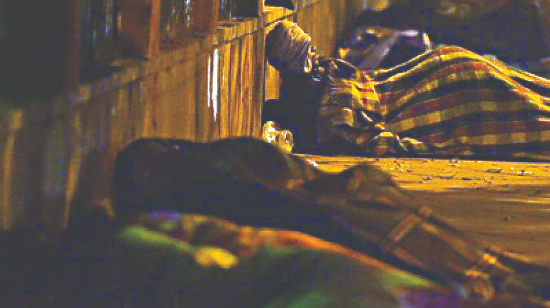Amid worst Covid wave, over 300 nameless deaths on streets

New Delhi: Even as thousands across the Capital hunted for hospital beds and oxygen cylinders during the peak of the city's most recent Covid wave, hundreds, mostly homeless and destitute, kept dying on the streets of Delhi, some likely from Covid and suicides, most from substance abuse, poverty and accidents. These dead are nameless.
According to data accessed by Millennium Post, more than 750 unidentified dead bodies (UIDBs) have been found this year (till May) strewn across the city, of which over 330 were discovered in April and May —Delhi's worst Covid weeks since the outbreak. The data showed that about 420 such bodies were found in the city from January to March this year.
While the police were conducting regular Covid tests of these dead bodies during April and May, some officials said, "Everybody was going to the hospital for COVID-19 test and then postmortem.".
One of the officials from the district said that 34 people had died there without identity which included 17 in April and May. "33 were adults and one was a minor. In one case, we found that the person was murdered," he said. Generally, the UIDBs are adults.
Another official said that after completing their process, they usually send the body for postmortem procedures to the hospital concerned and in COVID-19 suspect cases, the doctor conducts a Coronavirus test.
"Liquor and drugs addiction is another reason behind the deaths of these people. One of the reasons might be homeless people have been suffering from a deadly disease which led to their deaths," another official said.
After the postmortem report, the reason behind death is clear and if it is murder, then a case is registered.
"In some cases, we have also found that homeless people have died due to starvation, malnutrition or they were of old age groups. Other reasons are also there," the official said.
"Every possible step is taken to identify the deceased," one official said, adding that despite this, it does not yield results.
As per procedure, after any UIDB is found, a message regarding the body is flashed to all SHOs, ACPs, DCPs and senior officers of other states. Hue and cry notices with photographs of the deceased are pasted and cross-referenced with missing complaints of different police stations.
During their probe, police record identifiers like tattoos, birthmarks and tailor markings on the clothing of the body.
Enquiries should be made from the neighbouring police stations about any unidentified dead body found or information about missing persons admitted in the hospitals. Enquiries should also be made from the hospitals about unidentified injured persons admitted in the hospitals.
Last year, 545 bodies were found between January and March and 392 were recovered from April to July. The data further shows that in 2018, as many as 2,991 bodies were recovered and in 2017 about 2,615 bodies were found. In 2019, more than 1,500 bodies were found.
The police personnel dealing with these bodies are at risk of catching Covid at all times as they do not know if the deceased had Covid or not.
"Staff are provided PPE kits and other necessary things for their safety," officials said.
"A large number of dead bodies are recovered in the city with no identification card, Mark, proof found on them. It is of paramount important to make sincere and systematic efforts to trace out the missing persons and identify the unidentified dead bodies," they added.



